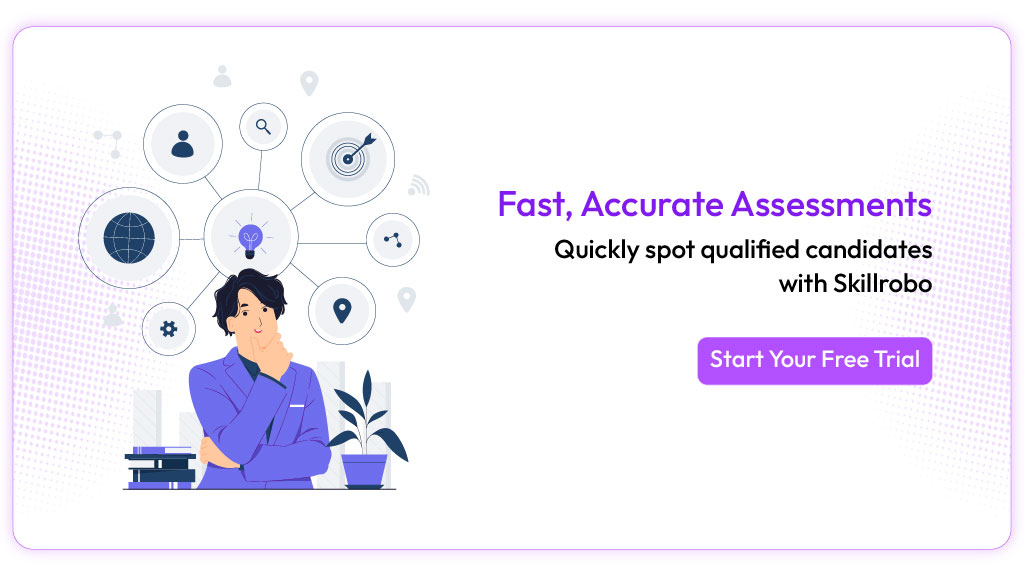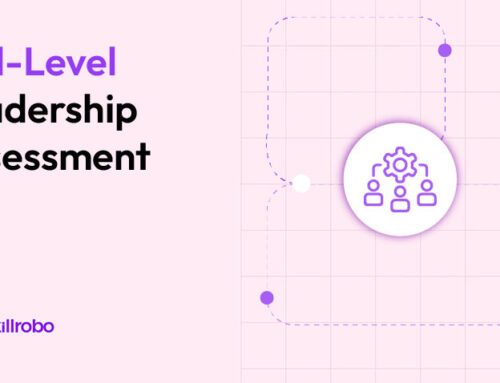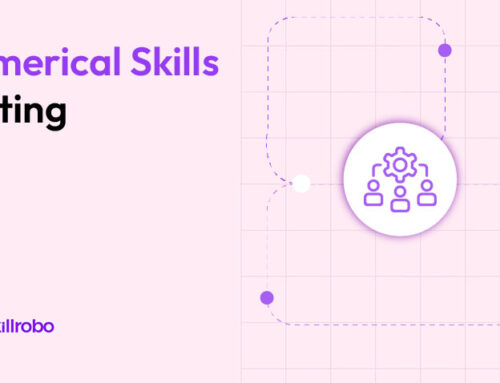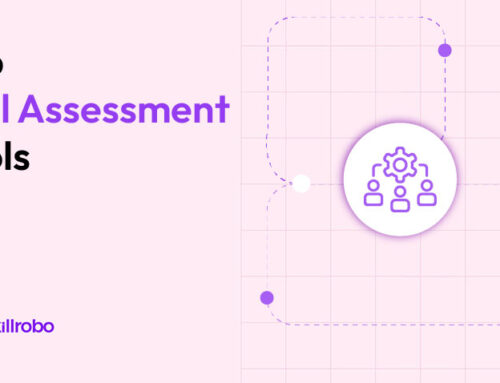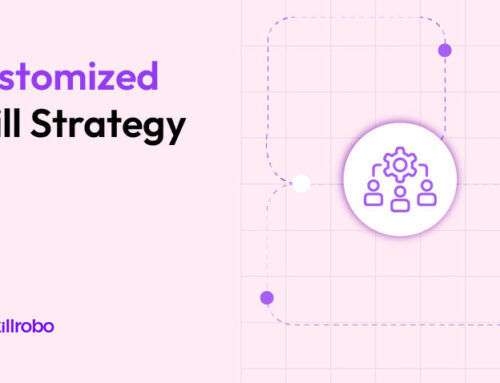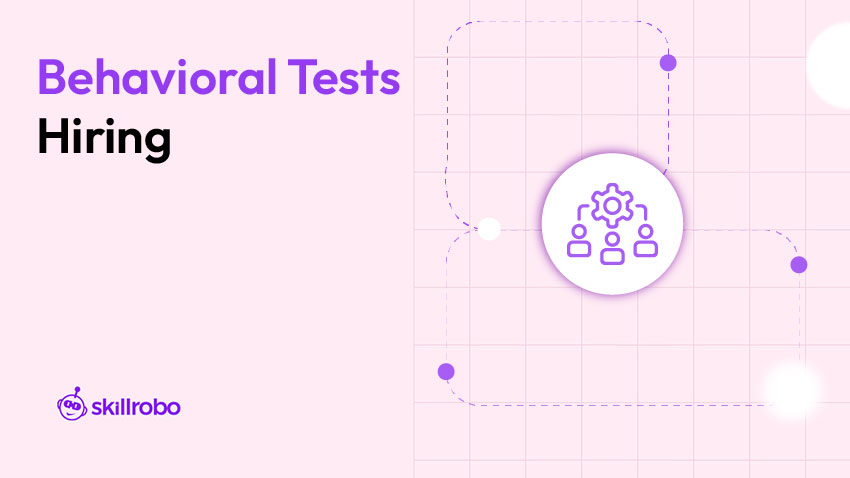
Key Takeaways
-
Behavioral aptitude tests provide valuable insights into candidate behavior, communication patterns, and decision-making style, revealing traits not captured in resumes.
-
These assessments help minimize hiring bias, align cultural expectations, and reduce early attrition by identifying mismatches before onboarding begins.
-
Behavior-based assessments improve role alignment, boost engagement, and increase retention by evaluating how candidates handle real-world workplace challenges.
-
Structured behavioral data allows recruiters to make faster, evidence-based decisions while ensuring fairness and consistency across hiring stages.
Hiring for Skill Isn’t Enough Anymore
Resumes highlight qualifications. Interviews reveal communication. But neither truly uncovers how a candidate will behave when things go wrong, or when they’re leading a team. That’s where behavioral aptitude tests shine. Hiring is no longer about credentials alone. Today’s successful teams are built on adaptability, collaboration, and cultural alignment. Behavioral assessments offer objective insights into how a person thinks, reacts, and fits into your organizational fabric before they even walk through the door. In this blog, we break down the purpose, value, and best practices for incorporating behavioral aptitude tests in the hiring process.
What Is a Behavioral Aptitude Test?
A behavioral aptitude test evaluates how a person is likely to behave in workplace scenarios. Unlike technical tests, which measure what a person knows, these assessments predict how they respond to stress, feedback, teamwork, and deadlines.
They typically cover:
- Decision-making Style– Assesses how candidates analyze situations, weigh options, and choose actions under pressure. It reveals their level of confidence, logic, and judgment.
- Adaptability to Change– Evaluates how well individuals adjust to shifting priorities or unexpected challenges. Adaptable candidates are more resilient in dynamic environments.
- Emotional Regulation– Measures how candidates manage stress, stay composed, and handle feedback. Strong emotional control leads to better interpersonal dynamics.
- Communication Tendencies – Analyze how individuals express ideas, listen, and respond in conversations. It helps predict collaboration and team alignment.
- Integrity and Accountability – Assesses ethical behavior, ownership of tasks, and willingness to admit mistakes. These traits support trust and reliability in the workplace.
The goal isn’t to label candidates, but to understand whether their behavioral tendencies align with the role and company culture.
Why Behavior Testing Beats Gut-Feeling Hiring
Many hiring decisions still hinge on a “good feeling” about a candidate or a strong interview performance. But relying on instincts—however well-meaning—introduces unconscious bias, inconsistency, and costly mis-hires. Behavioral assessments bring structure and objectivity to the process, providing measurable insight into how a candidate is likely to behave once they’re part of your team.
By understanding behavior before making an offer, companies can predict performance, reduce friction, and ensure long-term alignment, not just short-term charisma. Here’s how behavior testing enhances hiring decisions across the board:
1. Improved Cultural Fit
Culture fit goes beyond shared values—it’s about how people work together. Behavioral assessments reveal whether a candidate’s communication style, pace, and collaboration preferences match the team or department they’re entering.
With tools like identifying personality traits, companies can evaluate candidates for traits such as assertiveness, empathy, and sociability—traits that can make or break team dynamics. Hiring for behavioral alignment results in stronger cohesion, less miscommunication, and a more harmonious workplace from day one.
2. Reduced Turnover Risk
Early attrition is often the result of behavioral misalignment—employees feeling overwhelmed, underprepared, or disconnected from their team or responsibilities. Behavioral assessments help reduce this risk by identifying potential mismatches before they happen.
According to internal research, teams that integrate behavioral assessments into their hiring process report up to 40% fewer exits within the first year. Using behavioral insights along with employee assessment software allows HR teams to create proactive retention strategies and faster onboarding transitions.
3. Better Role Alignment
Not every great candidate will thrive in every role. Someone who excels in independent tasks may struggle in highly collaborative environments—and vice versa. Behavioral testing reveals natural tendencies that influence how a candidate will handle structure, autonomy, feedback, or ambiguity.
Using assessments aligned with your hiring goals (like types of assessment to organize hiring) helps recruiters place the right people in the right roles, improving performance and job satisfaction over the long term.
4. Objective Hiring Decisions
Behavioral assessments standardize candidate evaluation, removing guesswork and bias from the decision-making process. This is especially crucial for scaling hiring or high-volume recruitment, where consistency is key.
With support from platforms like the best candidate assessment tools, hiring teams can compare candidates using structured benchmarks and scoring rubrics. This ensures fair, defensible, and data-backed decisions every time.
Behavioral Traits to Measure Based on Role Type
Each job role requires a unique set of behavioral strengths. Understanding which behaviors contribute most to success in a specific position allows recruiters to tailor tests that predict real-world performance, not just potential.
Here’s a breakdown of key traits by role type:
| Role Type | Key Behavioral Traits |
|---|---|
| Sales & Business Development | Resilience under pressure, competitive drive, persuasion, and emotional stamina in high-rejection environments. |
| Customer Support | Empathy, emotional regulation, patience, and calmness under pressure—ideal for frontline interaction roles. |
| Engineering & Tech | Focus, problem-solving, independent thinking, and a preference for structure—critical in task-driven roles. |
| Leadership Roles | Strategic thinking, adaptability, decision-making under uncertainty, and a high degree of ownership. |
| Creative & Marketing | Innovation, curiosity, openness to feedback, and flexibility—essential in dynamic, exploratory environments. |
Tip: Tailoring behavioral assessments by role ensures you’re not just hiring good people—you’re hiring the right people for the right jobs.
When and How to Integrate Behavioral Testing
Behavioral aptitude tests are most effective when they enhance, not replace, your current hiring workflow. Think of them as a strategic layer that reveals how candidates will behave in real scenarios, not just how they present in interviews or on resumes. For maximum impact, behavioral testing should be introduced at multiple touchpoints during the hiring process to guide smarter decisions and reduce risk.
Here’s how to incorporate them seamlessly:
1. Pre-Interview Screening
Introduce short, behavior-focused tests after initial resume filtering. These tests help quickly identify candidates whose behavioral traits align with the role requirements, allowing you to focus interview time on the most promising talent. Using platforms like clerical skills testing can combine basic competency evaluations with behavioral data, streamlining the shortlist process for administrative or task-heavy roles.
Introduce short, behavior-focused tests after initial resume filtering. These tests help quickly identify candidates whose behavioral traits align with the role requirements, allowing you to focus interview time on the most promising talent. Using solutions like clerical skills testing can combine basic competency evaluations with behavioral data, streamlining the shortlist process for administrative or task-heavy roles.
2. During Structured Interviews
Behavioral assessment results make for powerful interview discussion points. If a candidate scores lower on adaptability or collaboration, use real scenarios to explore how they’ve handled similar situations in the past. This adds context and allows candidates to provide nuance beyond test results. It also helps interviewers maintain consistency across candidates, making evaluations fairer and more evidence-based.
3. Pre-Offer Validation
When it’s down to two top candidates with similar technical skills, behavioral insights can be the tie-breaker. Use assessments to compare communication styles, response to pressure, or leadership readiness. This step is especially useful for roles involving stakeholder coordination, client interactions, or cross-functional collaboration, where soft skills often outweigh hard ones.
Common Mistakes to Avoid
Behavioral assessments are powerful tools—but like any tool, they need to be used thoughtfully. Here are some of the most common pitfalls companies face when implementing them—and how to avoid them:
1. Treating Scores as Absolute Truths
Assessment results should be seen as starting points for discussion, not final judgments. A candidate’s behavior in a test may be influenced by context, stress, or unfamiliarity with the format. Use results to ask deeper questions, not to disqualify someone outright
2. Using Generic Tests
A one-size-fits-all test won’t deliver meaningful results. Tailor your behavioral assessments to the job’s demands—whether that’s creative agility for marketing or emotional regulation for customer service. Skillrobo supports this flexibility through customizable test templates designed for specific job categories, allowing you to maintain relevance and precision.
3. Skipping debriefs
Many companies skip the feedback loop. But sharing results (even in brief) enhances transparency and trust. Candidates feel respected when they understand how decisions are made, and this boosts your employer brand and candidate experience. Consider offering optional insights post-assessment to differentiate your hiring process from competitors.
4. Ignoring Soft Skills Post-Hire
Don’t stop at hiring. The same behavioral strengths and gaps identified during selection should guide onboarding, training, and leadership development. Ongoing assessments can track progress and unlock internal mobility. Use post-hire tools and performance mapping to ensure that behavioral strengths are nurtured, not forgotten after Day one.
Skillrobo: Behavioral Insights Built for Hiring Teams
Skillrobo offers a customizable suite of pre-employment assessments, including behavior-based evaluations that help hiring teams make smarter, faster decisions. With Skillrobo, you can:
- Tailor assessments to specific behavioral competencies like leadership, collaboration, or risk-taking
- Leverage SEYARC AI to auto-generate questions where test libraries fall short
- Ensure test security with webcam monitoring and browser-switch detection
- Receive categorized, real-time performance analytics for quick shortlisting
- Share tests via public URLs or embed them in career pages
Skillrobo empowers organizations to balance technical skills with human insight, helping you find not just qualified candidates, but the right people for the right roles.
Conclusion
Behavioral aptitude tests are no longer optional—they’re essential. In a world where culture, adaptability, and communication drive business success, hiring based on skills alone won’t cut it. By integrating behavioral testing into your hiring process, you reduce misalignment, support diversity, and set your future hires up for long-term success.
Ready to bring behavioral insight into your hiring workflow? Click here to sign up and start building customized behavior assessments with Skillrobo.
FAQs
1. What is the main purpose of a behavioral aptitude test in hiring?
Behavioral aptitude tests help predict how a candidate will act in real work situations. They assess traits like decision-making, communication, and adaptability, offering deeper insights beyond technical skills or resumes.
2. Are behavioral assessments suitable for all job roles?
Yes, but the traits measured should align with the role. For example, resilience and persuasion are key in sales, while patience and emotional regulation are essential in customer support.
3. Can behavioral test results improve the onboarding process?
Absolutely. Insights from behavioral assessments help tailor onboarding, communication, and training plans, ensuring better role fit and faster ramp-up for new hires.
Table of content
- Key Takeaways
- Hiring for Skill Isn’t Enough Anymore
- What Is a Behavioral Aptitude Test?
- Why Behavior Testing Beats Gut-Feeling Hiring
- Behavioral Traits to Measure Based on Role Type
- When and How to Integrate Behavioral Testing
- Common Mistakes to Avoid
- Skillrobo: Behavioral Insights Built for Hiring Teams
- Conclusion
- FAQs

